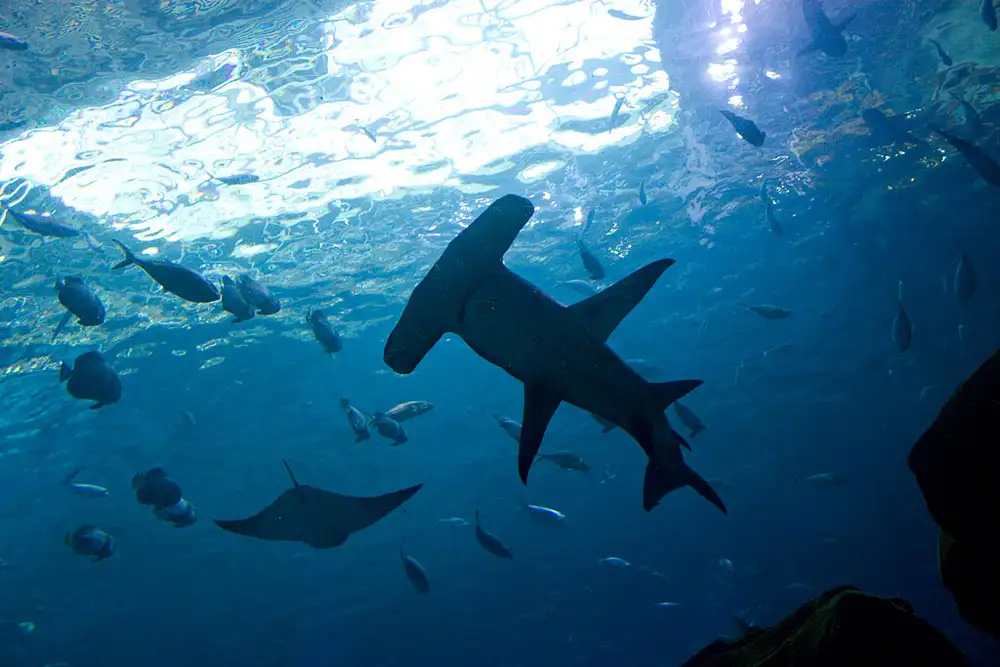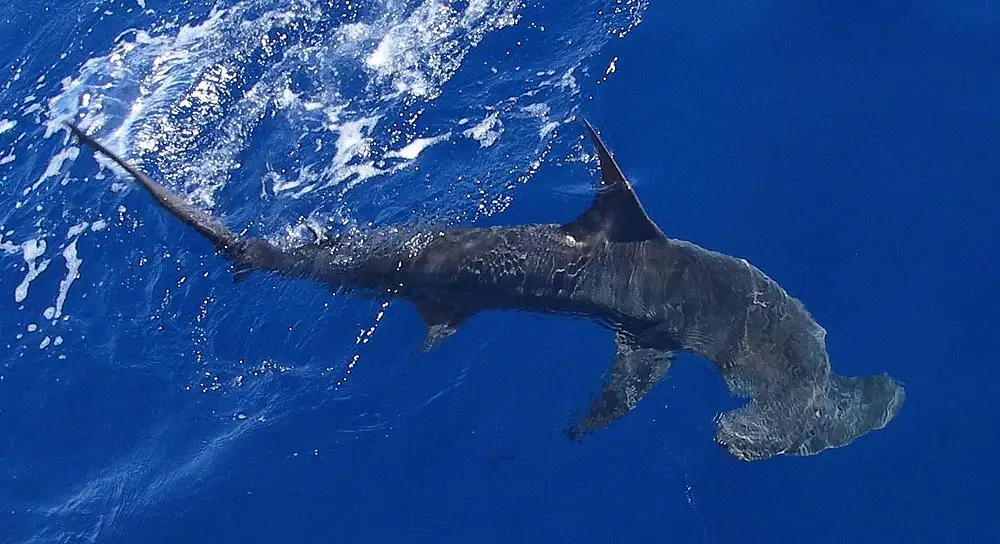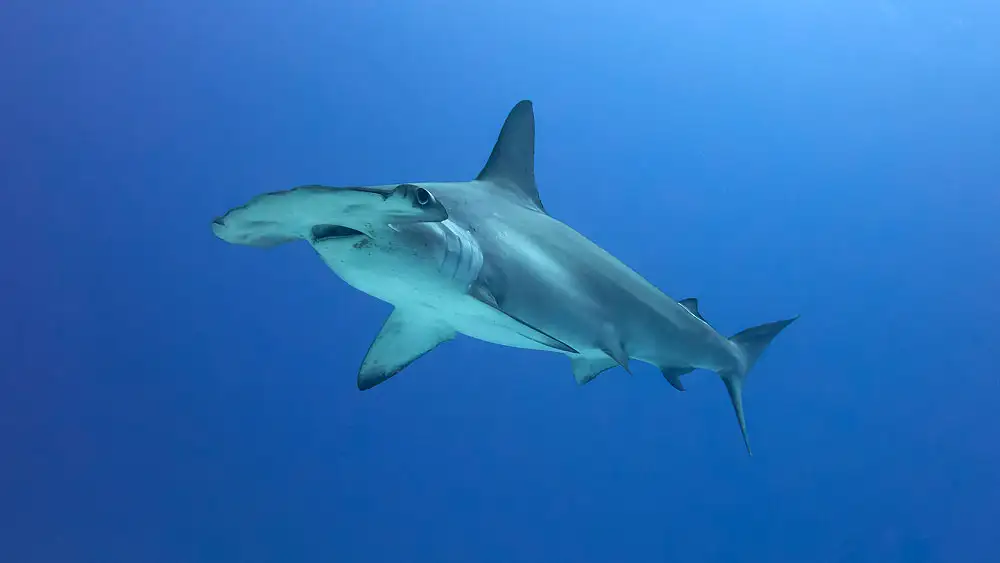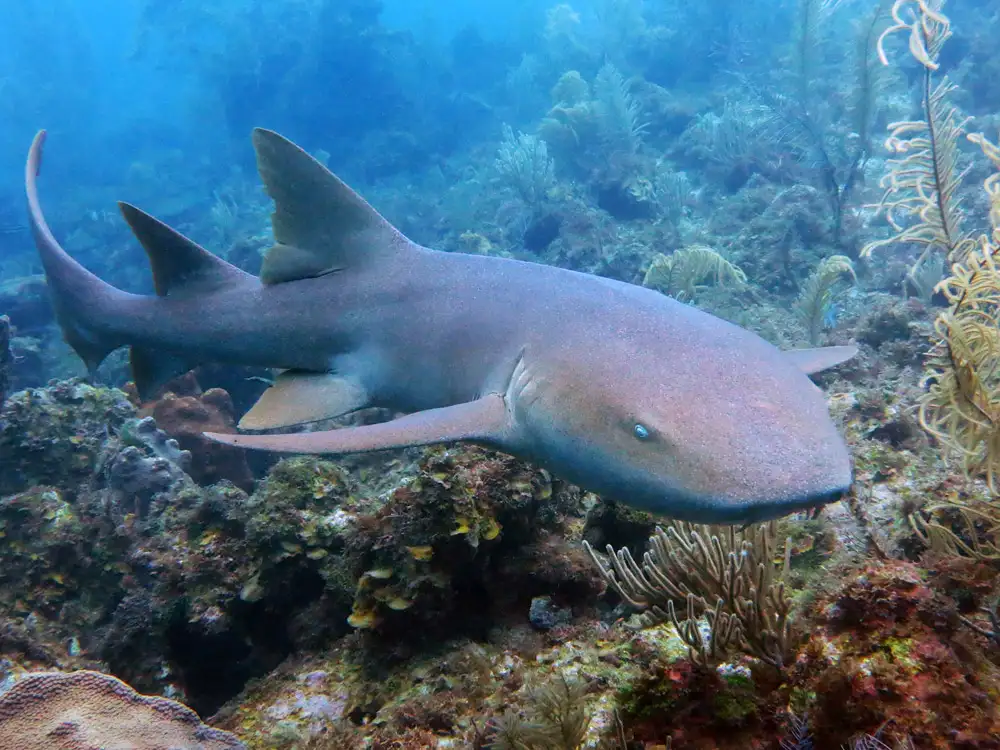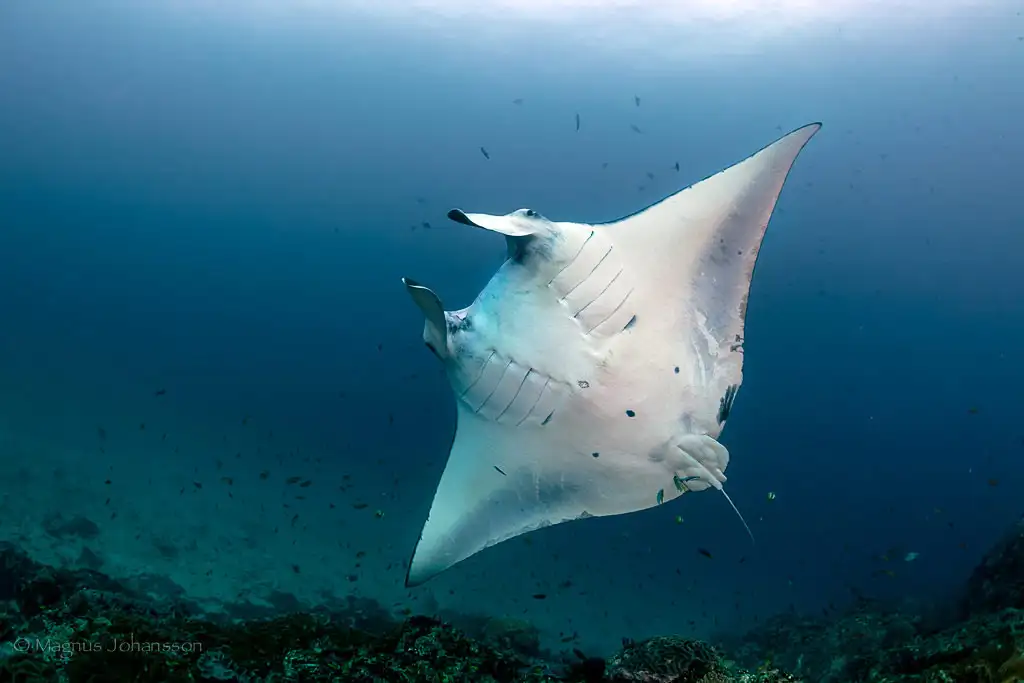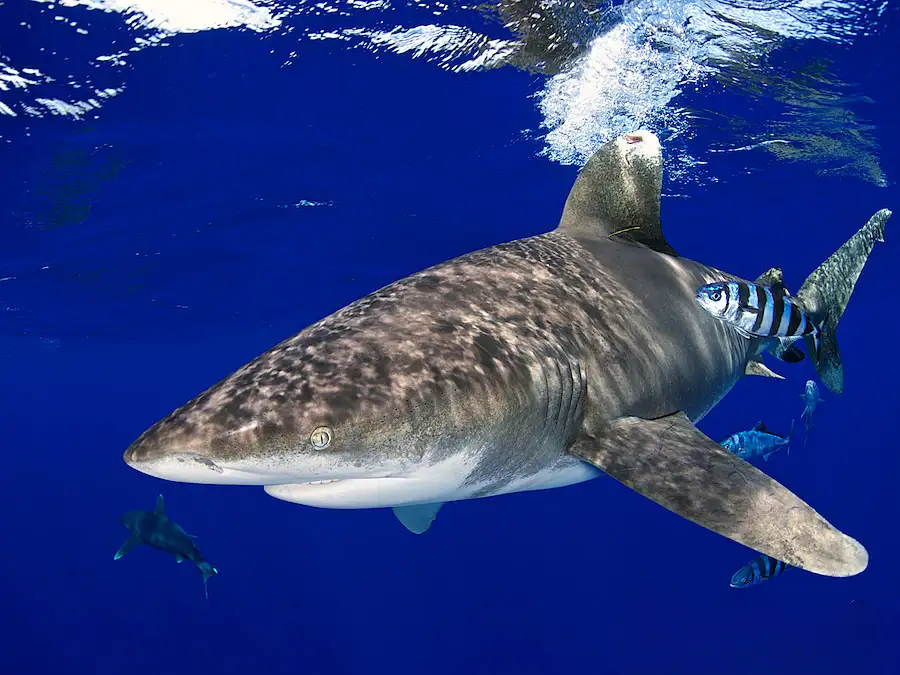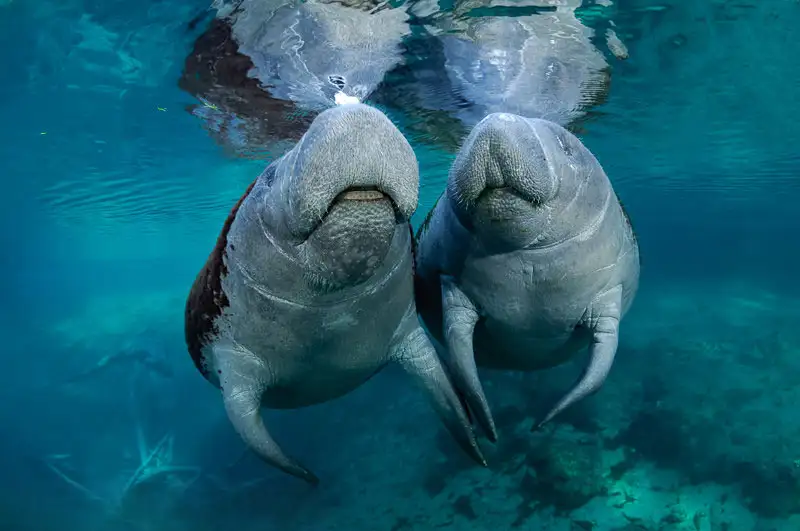Smooth Hammerhead
IUCN
VUBasic Information
Scientific classification
- name:Smooth Hammerhead
- Scientific Name:Sphyrna zygaena
- Outline:Large Fish
- Family:Sphyrnidae Sphyrna
Vital signs
- length:Common 2.5–3.5 m; max ~4 m
- Weight:Typically 100–230 kg; to ~300–400 kg
- lifetime:c. 20–30 years
Feature
Temperate–tropical, migratory schooling shark; placental viviparous; hunts pelagic fishes/rays/squid.
Distribution and Habitat
Nearshore embayments to upper open ocean (0–200+ m); more cold‑tolerant than other hammerheads.
Appearance
Straight, notch‑less cephalofoil front; tall falcate first dorsal; grey‑olive dorsum, white belly; pale/blackish fin edges in young.
Details
The smooth hammerhead (Sphyrna zygaena) is a widely distributed temperate–tropical shark in familySphyrnidae. Its hammer‑shaped cephalofoil enhances maneuverability and electro‑olfactory sensing for huntingpelagic fishes, rays and cephalopods.
Ecology & Life History
Migrations & schools: seasonal movements; juveniles/subadults often school.
Diet: small pelagics, squids, rays and crustaceans along shelves and in the upper ocean.
Reproduction: placental viviparous (yolk‑sac placenta); gestation ~8–11 months; litters of ~20–50 pups (regional variation).
Identification
Straight leading edge with no median notch distinguishes the cephalofoil from the scalloped hammerhead (S. lewini). The first dorsal fin is tall and falcate, but less blocky than in the great hammerhead (S. mokarran). Dorsum grey‑brown to olive, belly white; young may show pale/blackish fin margins.
Size & Longevity
Length: commonly 2.5–3.5 m TL; maximum ~4 m.
Weight: typically 100–230 kg; very large individuals to ~300–400 kg.
Life: about 20–30 years.
Range & Habitat
Nearly worldwide in temperate–tropical seas, from nearshore embayments/river mouths to the upper open ocean (often 0–200+ m). Compared with other hammerheads it shows greater cold tolerance and is common in temperate waters.
Threats & Conservation
Fisheries pressure: targeted/bycatch in longlines, gillnets and trawls; high risk from the fin trade.
Intrinsic vulnerability: late maturity and slow population growth despite large litters.
IUCN global status: Vulnerable (VU). Priorities include quotas/min sizes, spatio‑temporal closures, bycatch mitigation & rapid release (circle hooks, weak links), and trade monitoring/traceability.
FAQ
Q1. Key separation from scalloped/great hammerheads? Smooth hammerheads have a straight, notch‑less cephalofoil front.
Great hammerheads have a blocky head and very tall, angular first dorsal fin.
Q2. Nearshore presence? Juveniles frequent shallow shelves and estuary mouths; adults are more oceanic and migratory.
Q3. Dangerous to people? Generally not aggressive; keep distance, avoid baited diving practices.
Q4. Why Vulnerable? Heavy fishing/fin trade plus low growth rates drive declines in many regions.

